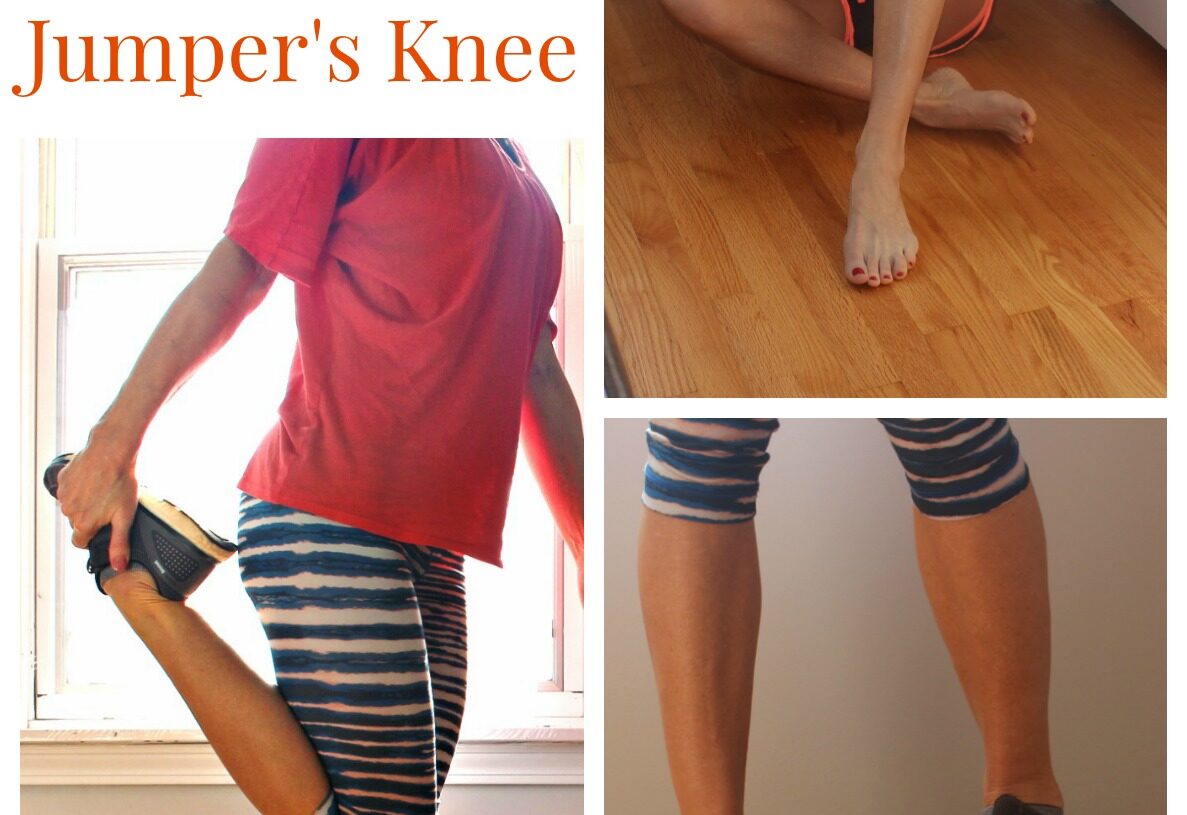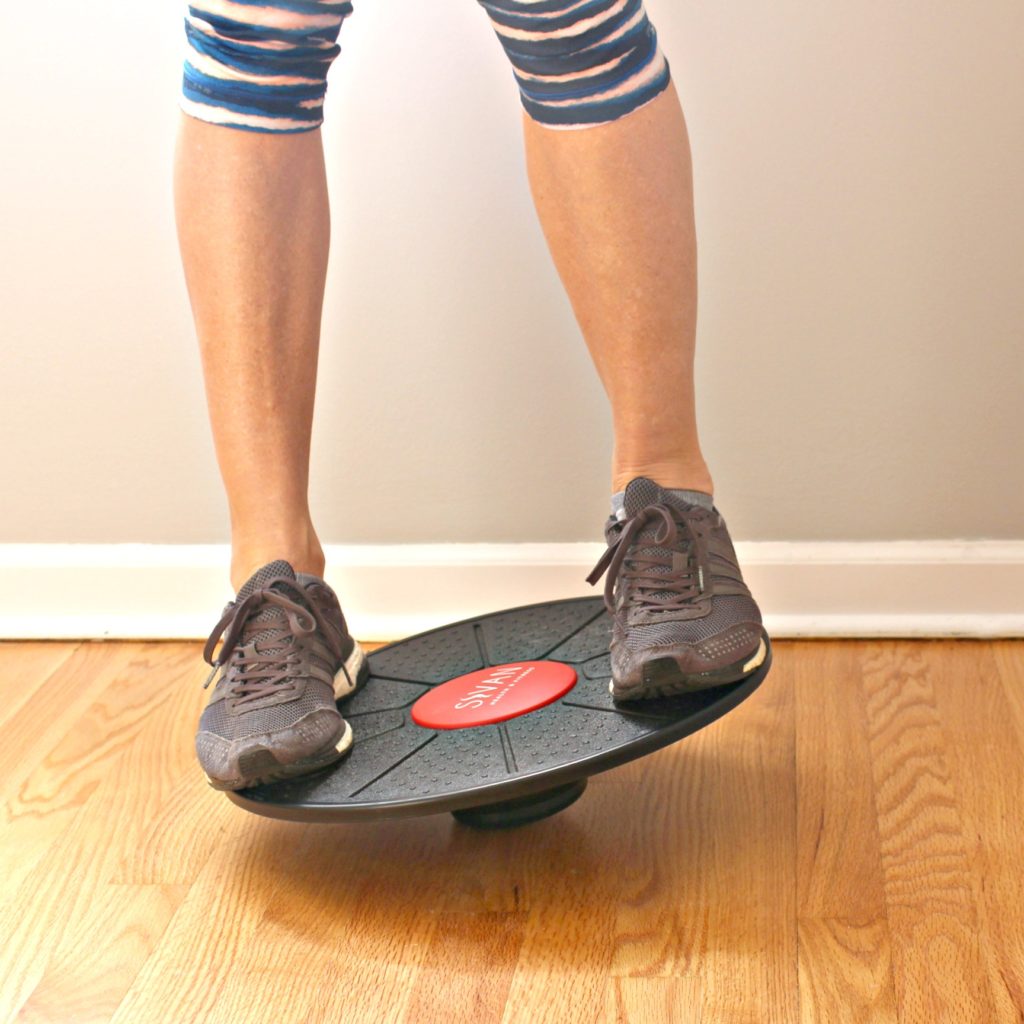Each individual case must be diagnosed by a doctor and a treatment plan discussed with a physical therapist. Please do that if you are having pain in your knee(s). There can be many contributing factors to how the jumper’s knee occurred during exercise that have to do with frequency, intensity and mechanics, to name a few. My case was eventually from overuse and pushing through the pain (ignoring it) hoping that it would go away. Because of that, my tendon would not decrease in swelling even with ice and my knee began to give out from the pain when I would extend it backward into a locked standing position. I am unable to take ibuprofen (an anti-inflammatory) due to having only one kidney so rest and ice were two things I could do to recoup. 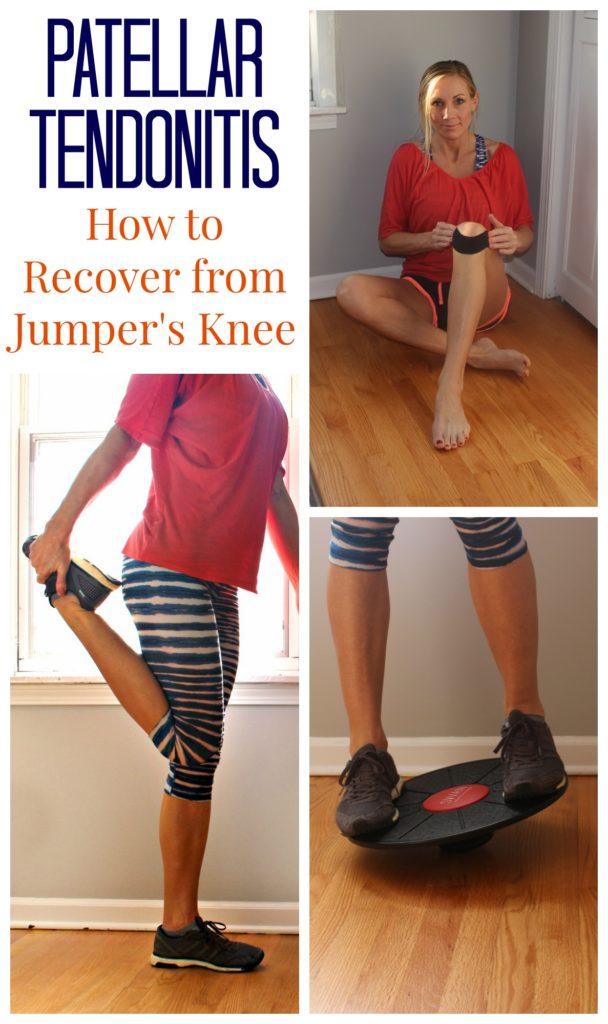
This condition is mainly caused by repeatedly loading the knee with your weight (through squats, steps, lunges) and putting strain on the knee to get your body weight back up. Exercising with poor mechanics especially letting your knees buckle inward or knees not being centered over your second and third toes while bending, changes the direction of the pull on the patella, leading to direct strain on the tendon.
Causes of Jumper’s Knee
- lack of strength in major muscle groups
- lack of flexibility in muscle groups
- imbalance of strength in hip, thighs, knees and ankles
- imbalance of strength in muscle groups
- imbalance issues in general
- overuse
- repetitive mechanical loading of the tendon through excessive jumping and landing activity. Training duration within a session or a season is the most common reason for overuse.* *credit
The physical therapist who gave me the initial evaluation noticed right away that my main issue is poor balance and instability. (Yes, I have been cursed since birth with terrible balance!) My knees turn inward when I bend them for squats and lunges. As well, my hips are unevenly aligned and do not stay facing to the front when I walk/run or lunge, but instead turn outward toward whichever foot I am placing weight on. (This is all true and are things I have been trying to correct forever.) Therefore my main goals in physical therapy were to strengthen my hip flexor muscles, knees and ankles as well as focus on balance and form to keep my lower body properly aligned. (It is incredibly frustrating and a bit demoralizing to go from insanity workouts and cross fit boot camps to learning to walk on a straight line and doing hip bridges!) But I am doing the work and hoping that it will help ASAP so I can get back to my intensity and frequency of the exercises I love.
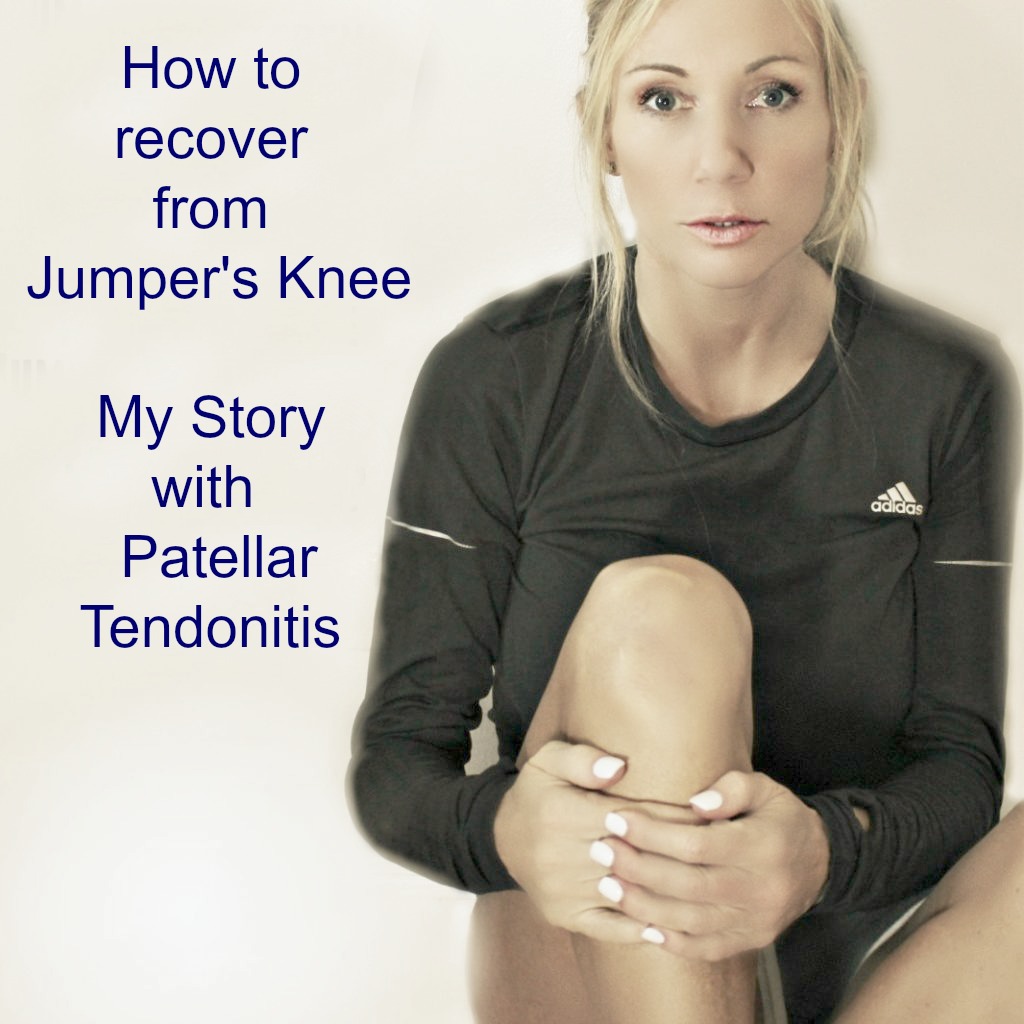
FACTS:
Strengthening the hips is the main treatment for runners knee. There are a host of exercises, use of bands and balance progressions that you can do daily to achieve the hip strength you need to support your knees.
Quick Tips
TIP: Remember to ice your knee up to 15 minutes at a time a couple times a day in the beginning. Always ice after a work out and continue this for as long as it takes to maintain a normal knee.
TIP: Stretching your quads (and legs) throughout the day and especially before and after exercise is key to repair and maintenance. Bending your knee and holding your foot close to your butt to stretch the muscles works great. (Hold onto something if you have balance issues.)
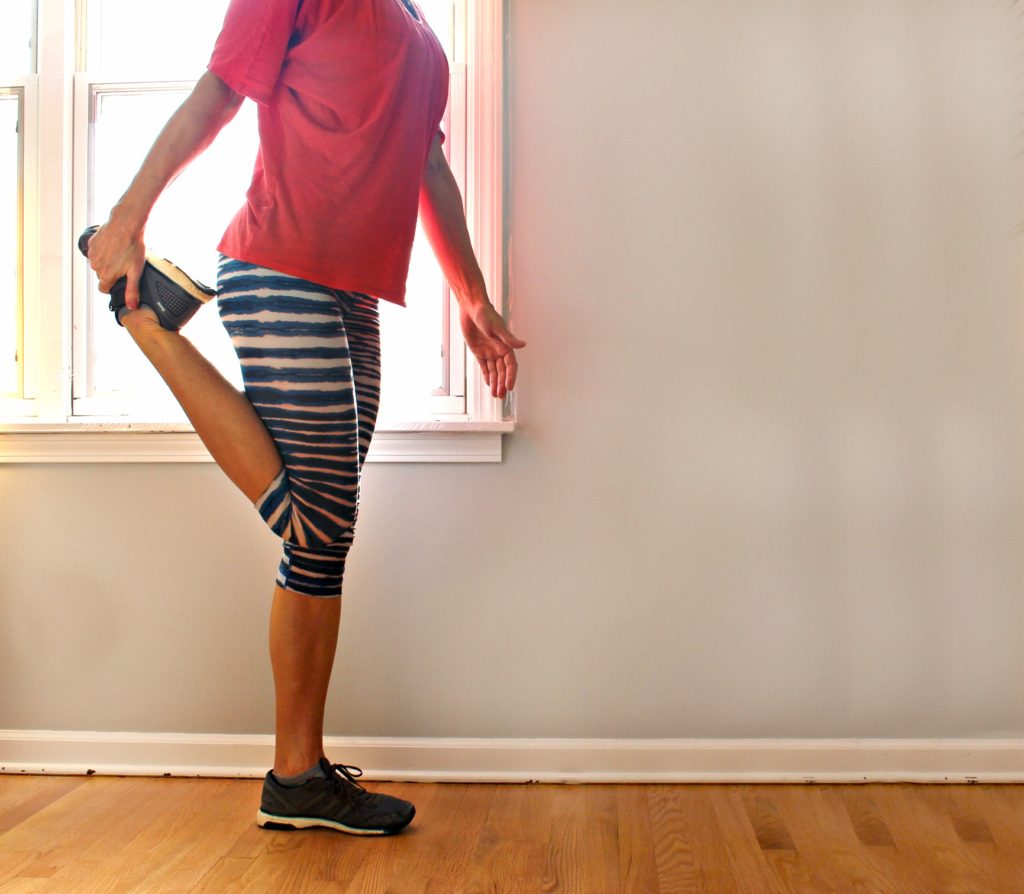
What to Avoid
You do not want to engage in exercises that cause your knee to jerk or absorb shock from pounding; like running, cross fit and jump rope. You also have to avoid deep squats and especially lunges where you will be using that lower tendon to work hard to get your body weight back up from a bending position.
Artificial Stability
Using Athletic Tape on your knee can be very helpful during the rehabilitation stage but is also recommended when easing back into your exercise routines. Taping helps supports the tendon to provide extra support and take the strain off of the tendon while you are healing. It is very simple to do at home. Put the center of the tape on your tendon and pull the sides upward an either side of your knee.
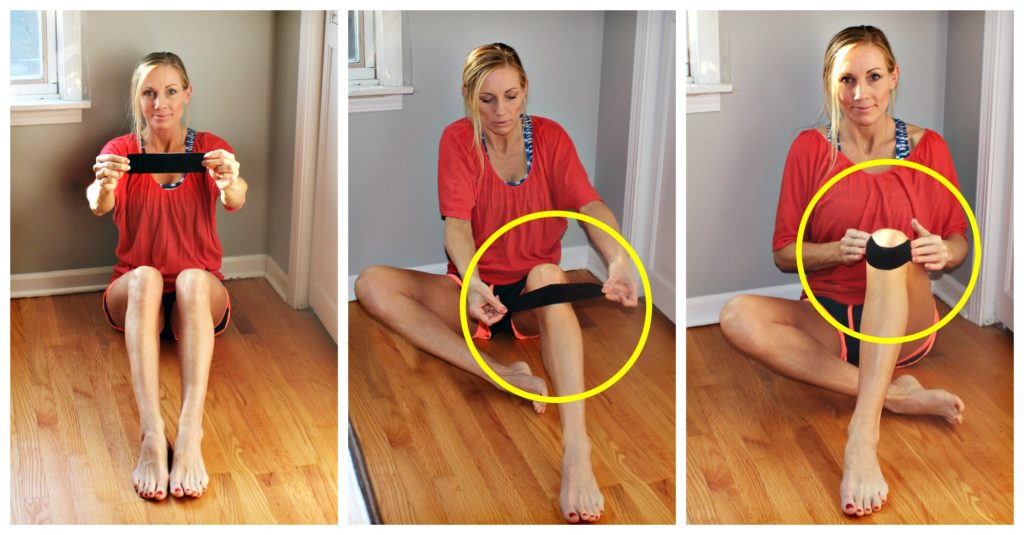
A Patella Tendon Strap is an artificial support for the tendon. It is good to use during recovery and also for prevention after rehabilitation. It is easy to put on and provides strength.
(I use the tendon strap for lifting and squats and the tape for other exercises where I want more flexibility in bending my knee.)
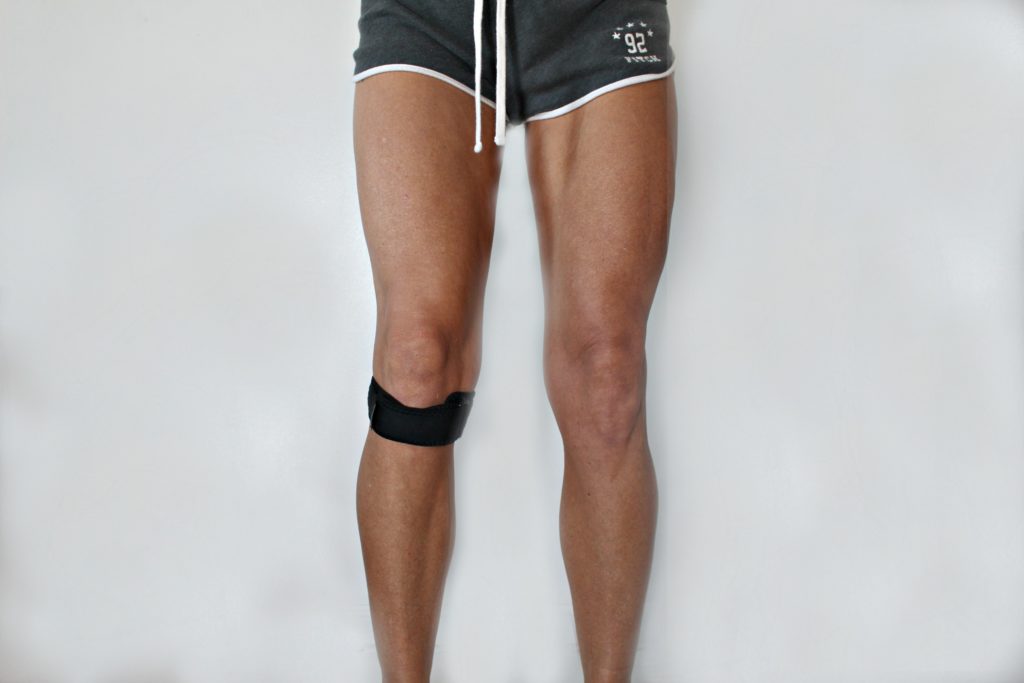
Here are some of the exercises that I did for jumper’s knee in physical therapy and at home:
- Recumbent Bike on low resistance in 10 – 20 minute increments and rest (even ice) in between. (I don’t have one at home, only at the therapy center.) They wanted me to do this before any other exercises to get my leg muscles warmed up and knee loosened up.
- Hip bridges at a slow and steady pace 30 per set up to 3 sets. (You can add weight on your lower stomach if your body weight is not challenging enough. I use both barbells and sand weights placed on my hip bones/lower abs to increase the strength at home.)
- One legged hip bridges with one leg extended out, hovering about 6 inches off the ground, and the other leg bent. Focus on keeping hips aligned and squeezing muscles. Lift and lower hips 20 times on each side and do 3 sets. Do them slow and focused to engage hip muscles. (Add weights if needed)
- Lie on your back and do leg raises with your knee straight but not locked. Move your leg as high as you can without losing balance or feeling pain. Repeat these leg lifts on each side 10 per side and up to 4 sets. Maintain hip alignment and balance!!
- Place one foot on the foam balance pad. Lift the other leg up slightly and balance. move the raised foot to tap the top, side and back of the mat in rotation while you try to maintain your balance. Do this exercise routine for 1 minute on each side.
- Place one foot on the edge of the foam balance pad and the other on the ground. Keeping both legs straight and hips facing forward, lift and lower the foot on the floor using the hips to do the movement. Do 20 on each side and repeat up to 4 times.
- Place both feet on the Stability Board and try to maintain balance in the center. Keep knees slightly bent with weight in the butt (like a squat). Keep hips facing forward and do not let knees bend inward. (Have a chair nearby because you will lose your balance and need something to steady yourself with your hands!)

This is the stability balance board I have at home. I like it because it has an attachment for the bottom to make it lower and higher as you get stronger! As well, it moves in all directions so you can move back and forth, side to side and just try to balance in the center!
Here are some more exercises that I did in Physical Therapy. You can go to this page at Summit Medical Group to learn more.

The North American Journal of sports Physical Therapy has an incredibly detailed article that I suggest reading HERE.
The Difference Between Runner’s Knee and Jumper’s Knee
Using Tumeric Curcumin for Knee Repair
Follow me on instagram @jennyatdapperhouse
What are your experiences with Jumper’s knee?
